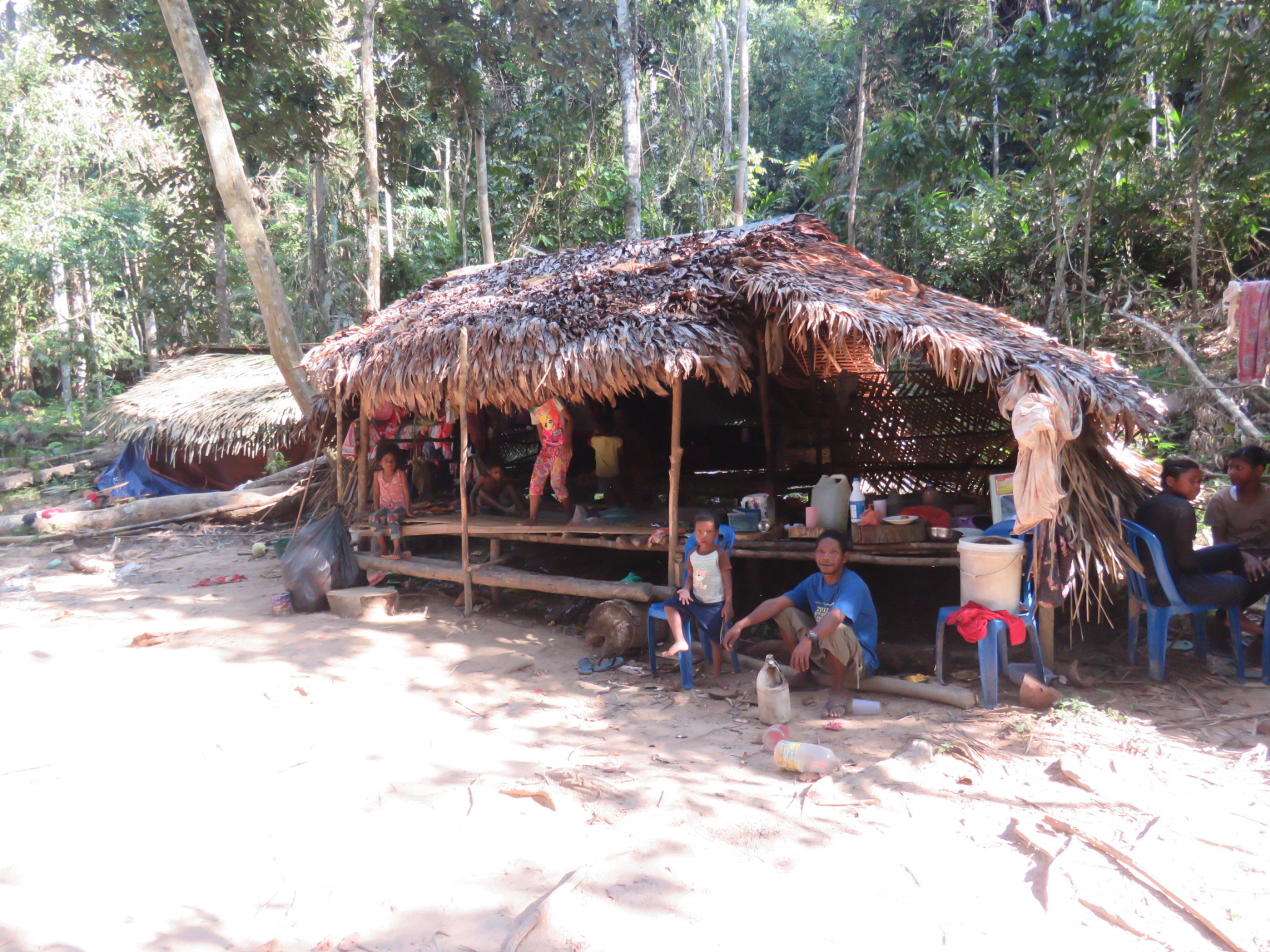We had 3 full days to enjoy in the jungle, and we did our best to spend them well. Of course, the heat was certainly a factor for how much we could do every day, so river and evening activities were always our preference.

We decided to begin our stay in the jungle with a “rapid shooting” activity. Basically, we got into a boat and moved through some tiny rapids and got a little wet. Then our tour guide rocked the boat back and forth to make sure we got REALLY wet. That was the end of that part of the tour.

The second part of our trip was to visit an Orang Asli (Aboriginal) village. I didn’t have high hopes, because these types of activities are often very kitsch, but I was pleasantly surprised with the way the tour was done.

Unlike many tours, where you just awkwardly walk through the town and look at people… In this tour, we actually learned about the tribe. Most of them didn’t speak English, but they all speak Batek and Malay, so our guide acted as a translator.

I learned a lot about the Batek people here. We watched how they traditionally started fires. No one tried telling us that it’s still how they do it, because now the tribe uses matches, but it was cool to see that they learned to use the best material the jungle had to get their fires lit. In under a minute, the villager had a flame growing. It was impressive.


We also learned how they still hunt. Blow pipes are still used today and are quite accurate and a reasonably good means to catch prey up in the trees. They taught us how they make the tranquilizer darts as well as how to use the blow pipe.



Some tourists even gave it a try! I bowed out because I’m feeling a little paranoid about putting my mouth on something other people have put their mouths on at the moment…

What I found most educational about this visit was the way that these tribes have been allowed to continue living traditionally in Malaysia. In Canada, aboriginals had their identities stolen from them through residential schools and even now, they are given useless land and people don’t understand why that’s a problem. They lost their way of living and have never been given the chance to get it back.

In Malaysia, the tribes have been given much more freedom. They are allowed to live and hunt in large designated areas, and they’re allowed to live traditionally. We saw plenty of young kids going into town for school, but usually at about 11 years old, they start to learn how to live off the land. They are learning to read and write but they also know how to make traditional weapons and how to rely on the rainforest

The Batek people use the rainforest to make an income. They search for sandle wood and other rare jungle items that they can sell to the villagers. This particular tribe wore “regular” clothing and shoes they they could buy with the money they earn from the rainforest and tourism. They also use the rainforest for medicine, but if an illness is serious, they know to go to a nearby hospital. They are a part of Malaysia, but are still allowed their traditional way of life. It was really beautiful to see.

It got me considering my own country, as traveling often does. It made me sad that we can’t have this in Canada. Any chance for this was lost when the government took kids away from their families and never let them learn the traditional ways of their tribes. Too much was lost during that time and it’s not something that can easily be brought back.

Of course, things aren’t perfect for the Batek people. An outbreak of measles killed 15 Batek people last year. With a population of only around 1500 people to begin with, this perfectly preventable disease did a number on the tribe it affected. A simple vaccination would have saved a lot of lives. As much as it’s wonderful to live off the land and stick to natural remedies when possible… It’s still foolish to avoid modern medicine when it’s available to you.

Our last day in the jungle we heard that some tourists from the Netherlands would be bringing the Batek village some medicine for a Gibbon who had fallen out of a tree and had been abandoned by its mother. The poor thing has a broken arm and an infection as a result (as best as I could understand). The village wants to protect this baby Gibbon, but because gibbons are endangered, they are reluctant to send it away unless they know it will be well cared for. The tourists are doing a great thing by bringing the medicine to the village.

I have 2 more posts planned for the jungle. One will be about all the wildlife we saw there! Check back soon!!
